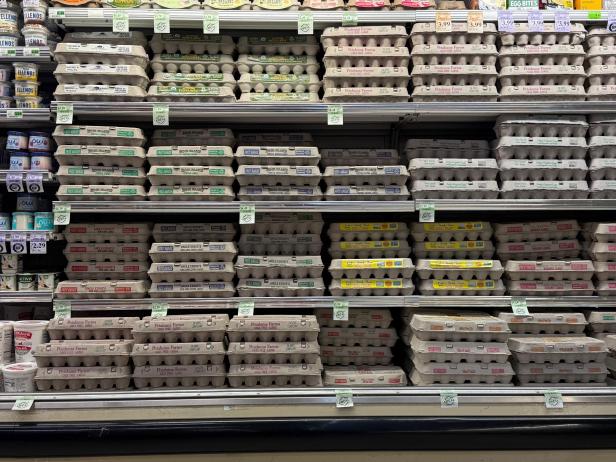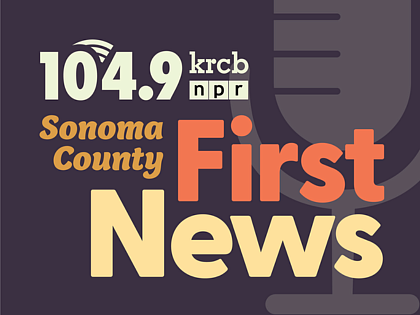 photo credit: Noah Abrams/KRCB
photo credit: Noah Abrams/KRCBA fully stocked selection of eggs in the dairy section at Oliver's Market on Stony Point Road in Santa Rosa on Friday, January 10th, 2025.
On a busy Friday morning at the Oliver’s Market on Stony Point Road in Santa Rosa, Dustin Canter is surveying a produce fridge.
"This will, this will last for maybe the weekend if we're lucky," Canter remarked.
For the time being, the egg section is fully stocked with fresh cartons of eggs.
That’s been a challenge of late for Canter, the cooperative market’s natural grocery buyer.
"There's one local supplier that I work with the most closely and they kind of sounded the alarm for me late October and just let me know, 'hey, it's gonna be a rough one,'" Canter said. "Between that conversation and now it's gotten worse than we thought it was gonna be."
To blame for climbing prices and falling egg supplies? The wave of Highly Pathogenic Avian Influenza sweeping the US and commercial chicken facilities, said Maurice Pitesky, a poultry expert at the University of California, Davis.
"When you look at the big picture in California, we have lost over 70% of our laying hens in the last several months," Pitesky said. "That has contributed to our shortage of eggs."
Pitesky said even when egg production is at full capacity, California is a net-importer of eggs.
While avian flu infecting commercial flocks, causing culls and denting production is a big factor, it is only one piece of the price puzzle, said David Ortega, professor of Food Economics and Policy at Michigan State University.
"The demand for eggs is what we call in economics, relatively inelastic," Ortega said. "Meaning that when prices increase, we don't see as large of a decrease in the quantity of eggs that are demanded; and you know, we're coming off of the holiday period, which is where we see an increase in the demand for eggs."
"So when you have disruptions to the supply and an increase in demand, prices have nowhere to go but up," Ortega said.
Add inflation into the mix, and it's meant in the second week of January, eggs, at large retailers like Safeway and Raley's, cost anywhere from $6 to $11 a dozen .
Canter said he has been able to keep costs mostly steady for Oliver's shoppers, from $4, to $10 dollars a dozen at the high end.
That's by leaning on local, though limited, supplies from nearby producers. A dozen of the weekly commodity priced eggs clocked in at $8.49 on January 10th.
"Everything else here is kind of independently farm run stuff," Canter said of the collection of eggs for sale at Oliver's. "What I've actually been seeing with those is that they've just been holding their price steady, but they're willing to run out. We'll order 10, 15 cases of one of these and we'll get maybe one or two cases."
Besides pressures from avian flu supply shocks and holiday demand spikes, California's animal welfare laws Pitesky said, limits the number of out of state egg suppliers.
The bottom line for shoppers like Marcela?
"I noticed that everything is really expensive now," she remarked while surveying the Oliver's egg section.
With the spread of avian flu still a major concern, just how long it will take for egg prices to stabilize remains uncertain.
Add in across-the-board inflation since the pandemic and Professor Ortega said it's unlikely egg prices will return to pre-Covid levels in the future.

 Live Radio
Live Radio




